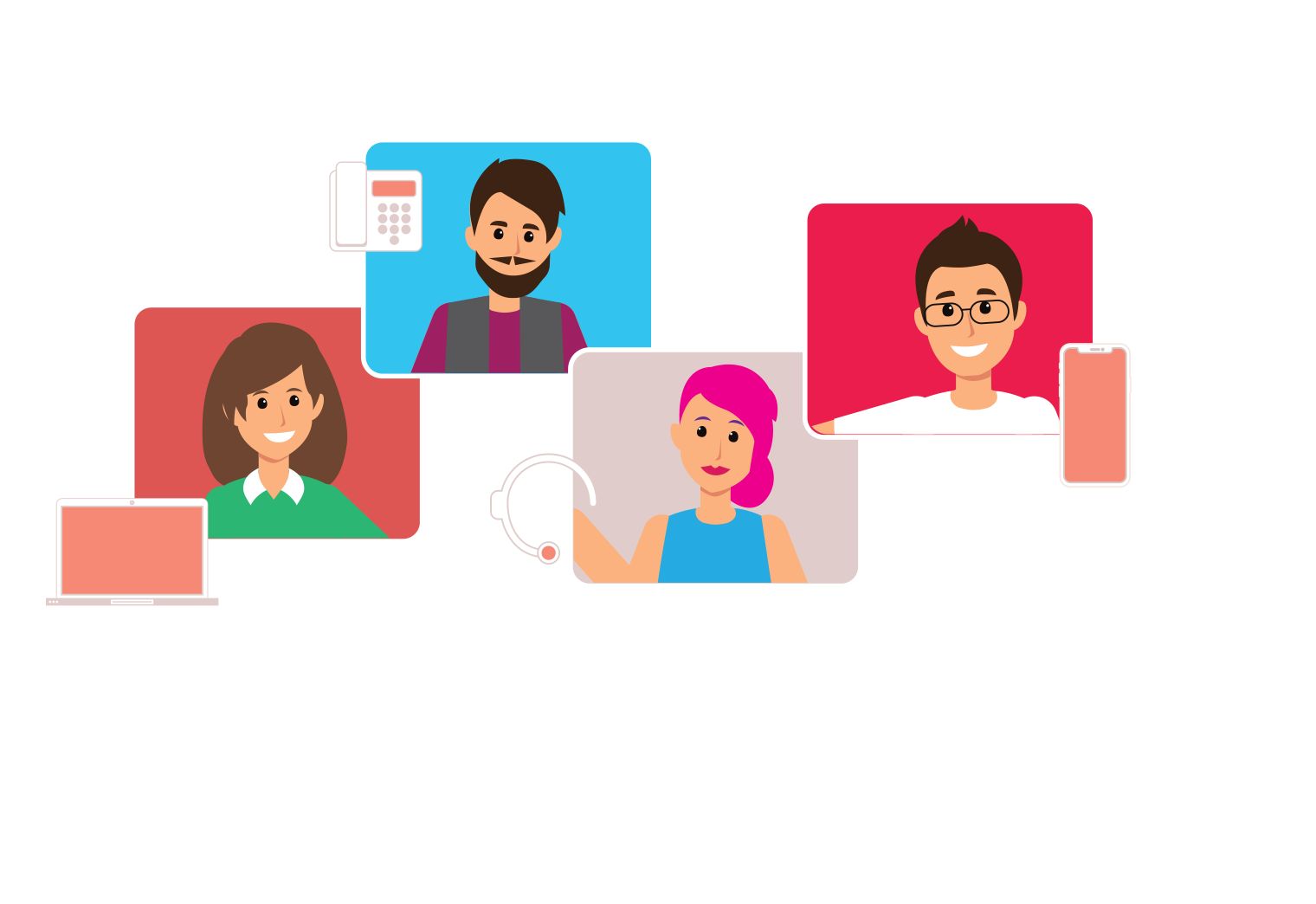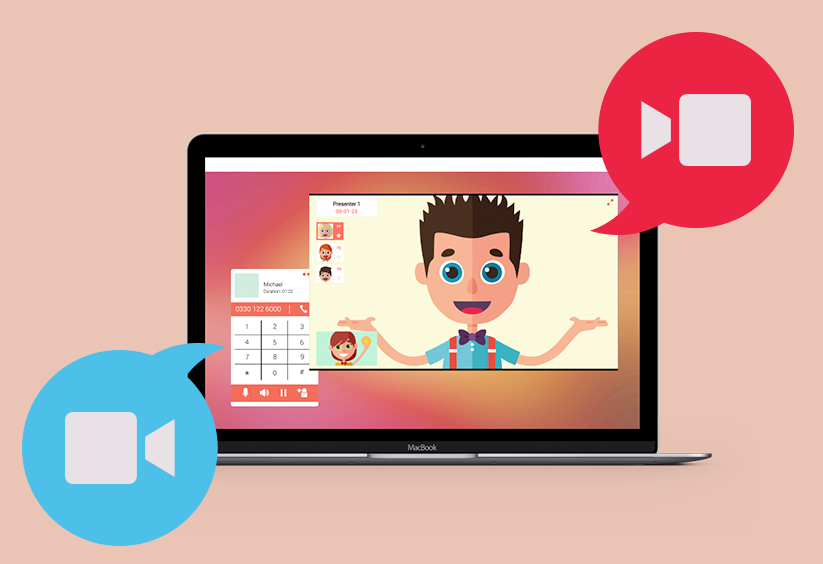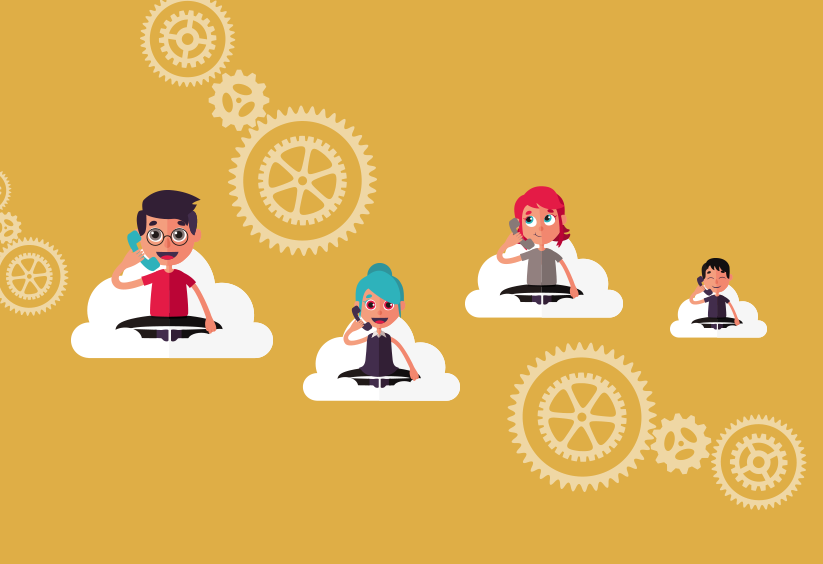Cart Total
$0.00
-
Your shopping cart is empty
Loading

Hello! Log in Your Account
New customer? Start here


|
5 min read
Contents
Quick Summary
Call monitoring features of business phone systems can benefit your customer support team in many ways. Today we discuss a few of them.
In today's digital age, businesses offer their clients a wide variety of online services — from shopping to financial transactions. But when it comes to customer service, a majority of consumers still prefer to contact businesses over the phone.
A survey on customer contact preferences shows that a whopping 60% of respondents prefer phone calls over other means of contact. This is followed by email and physical store visits at 16% and 15%, respectively. So, clearly, there's still plenty to be gained from customer service calls.
One way to get the most out of these calls is to implement call monitoring. Here are four ways this feature can heighten your company's customer service:

Customer support teams can leverage call monitoring to improve your business' caller experience.
Evaluating the customer service department becomes much easier with call monitoring because it allows executives to listen to ongoing calls and review previous calls. This allows you to conduct in-depth reviews on the department's current performance.
Once you've found where the bottlenecks are forming, your in-house management analyst can start reworking the process to increase efficiency. As one of the leading careers in business data analytics, management analysts have strong organizational skills and are adept at data visualization. By analyzing the data extrapolated from customer service lines, they can work towards optimizing the department's service model, making recommendations based on facts and hard numbers.
For example, there are cases where automated customer service can actually reduce business performance and deter clients from reaching out again. That said, it would be best to either optimize your automated system or do away with it altogether.
Yay.com’s IVR call menus are just one tool that your company can use to improve call routing efficiency while boosting the caller experience for your customers. Call monitoring makes it clear where your callers are dropping out of call queues or IVR menus, providing crucial insight into the next steps your business can take to maximise conversion.
Outside of internal bottlenecks, call monitoring can also be useful in providing real-time support to customer service representatives. The whisper feature lets you talk to the representative without the customer hearing you. This comes in very handy when your employee is having trouble with a query. It's also a great way to offer a few words of encouragement to them.
What’s more, if the customer opens with a difficult topic that your customer service representative isn't qualified to handle, you can use the join or barge features to jump straight into the call and communicate with the caller directly. This function is especially useful for dealing with volatile customers as it lets you step in directly to defuse the situation.

Call monitoring features like the Whisper function empower supervisors to advise, support and guide colleagues.
Another benefit of call monitoring is that it allows both customer service staff and company executives to gain real-time feedback from clients. Customer feedback is crucial data as it helps businesses determine how customers perceive the business and how else they can improve their services. Feedback is also an avenue to gain insights into current consumer and market trends.
With call monitoring, the time it takes to act on this feedback is significantly reduced. Thus, you can make decisions for the business at a much faster rate. And in the case of negative feedback or customer concerns, executives can jump into the call using the join feature and address a client's concerns immediately.
Once you have a sizable number of recordings in your database, you can use that information to pinpoint skill gaps and areas of improvement for individual employees. Hand the information to your human resources manager and have them study all the calls; this allows your HR department to optimize their training programs, ensuring they fit the workforce's current skills and capabilities.
For instance, some customer service employees might need help with their general communication skills, while others might need pointers on how to deal with difficult customers. This information allows for a more focused training program, as opposed to one based on generalities and guesswork.
By implementing these data-driven training decisions, your business performance is more likely to improve. This also increases employee engagement as it signals to your staff that you're paying attention to them and are interested in developing their skills.
Customer service is an essential facet of any business. It's a direct line of communication with one's clients and can provide a wealth of data to increase business performance. Thus, it's best to incorporate systems that can actively improve the customer service department and, in this case, call monitoring more than fits the bill.
Content intended only for the use of Yay.com
Written by Alicia Kane


From stormy weather to the ever-changing business climate, it pays to stay ahead of the curve, building a culture of preparedness and a renewed focus on growth.
Posted February 6 2023 | 5 min

Business VoIP is feature-rich and capable of offering businesses a full phone system providing a quality caller experience.
Posted December 2 2021 | 6 min

We discuss UCaaS (Unified Communications as a Service), what it is, and its place in the future of the business communications industry.
Revised November 26 2021 | 9 min

We share five phone system hacks to help your customer service team be more effective and productive.
Posted November 2 2021 | 4 min

The call park feature of a voip phone system frees up your phone lines and your agents to handle more calls more efficiently
Posted August 10 2021 | 5 min

Looking for a new business phone system can be tricky. Here's our list of the most essential things to look for from your new phone system.
Posted February 18 2021 | 5 min

Moving phone lines, numbers and phone system is simple with hosted VoIP, as we've just found out during a recent office move!
Posted November 5 2019 | 3 min

Integrate your CRM solution with our business phone system and enjoy the business advantages it brings.
Posted August 23 2019 | 3 min

You're safe and secure when you deal with us. Find out about some of the practises we have in place to ensure that you're safely protected with us.
Posted April 24 2018 | 2 min

Learn why more and more schools, colleges and universities are turning to hosted VoIP for their internal and external communications.
Posted February 5 2018 | 4 min

We've compiled some tips to ensure your video conferences and calls are a success. Check out our advice for better virtual meetings in the office or home.
Posted September 12 2017 | 4 min

Find out why eye-watering installation times and the need for multiple physical phone lines is a thing of the past with a hosted VoIP service.
Posted June 19 2017 | 5 min

See how powerful VoIP phone system features can improve holiday business and caller experience even when you're out of the office.
Posted February 14 2017 | 4 min

Learn how Cloud PBX call history data can offer insights into your business and phone numbers.
Posted January 19 2017 | 3 min

Learn how a Hosted VoIP phone system can aid day-to-day productivity in your office.
Posted December 20 2016 | 4 min

Think you know what Hosted VoIP is? Enjoy 5 quick VoIP facts and find out when it was developed, what the acronym stands for, as well as other curious factoids!
Posted December 13 2016 | 3 min

Learn 5 ways migrating to VoIP and a Cloud PBX will cut your business communication costs and save you office space.
Posted December 13 2016 | 3 min